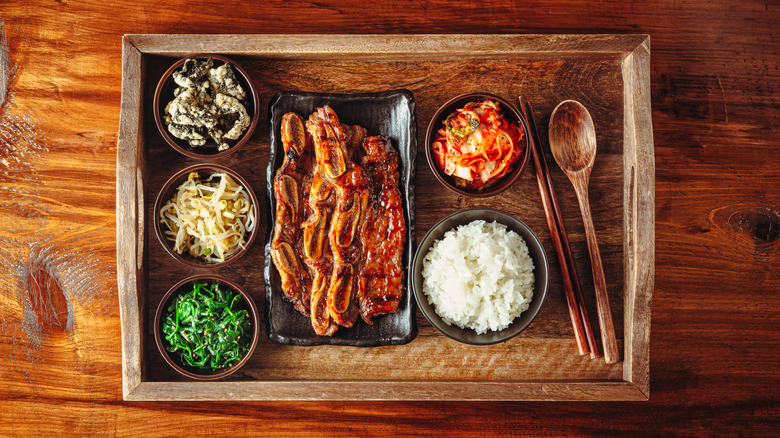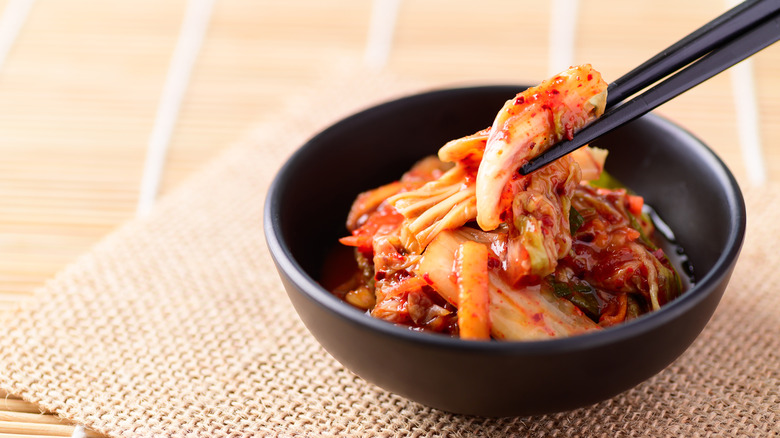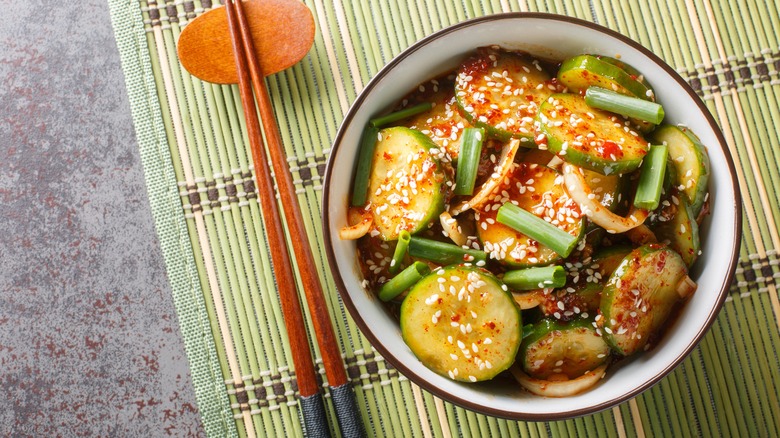Key Signs That A Korean BBQ Joint Is The Real Deal
When it comes to Korean BBQ restaurants, quality is the key to a tasty experience. That's why Daily Meal reached out to John Bach, executive chef of Seoul Food KBBQ. This catering service features a variety of delicious Korean dishes courtesy of chef Bach, who originally hails from South Korea and draws heavily from family recipes when creating tasty menu options. Because finding a good local Korean establishment can be challenging (and here's a top ordering tip for those new to Korean BBQ), Bach offers an easy way to determine whether a restaurant will offer a great experience: Try the kimchi.
As Bach says, "It is common practice for Koreans to judge a restaurant by its kimchi quality and taste." Typically consisting of fermented vegetables like cabbage, cucumbers, and radishes, kimchi is a tangy and flavorful dish often made spicy by the inclusion of gochugaru, a type of chili powder frequently used in Korean cuisine. Bach goes on to say, "You can expect any decent Korean restaurant to take significant pride and traditional intent with their kimchi." Another sign of quality to look for is location, as Bach states that "Korean business owners tend to open businesses where other Korean businesses are doing well."
What should quality kimchi taste like?
Kimchi is believed to have ancient roots, which means the dish has played a crucial role in Korean cuisine for some time. And while there's a variety of kimchi recipes out there that use different ingredients and flavorings, John Bach offers a few words of wisdom on what flavors to look for when judging the quality of the dish. Per the executive chef, balance is the key, as quality kimchi will offer spicy and salty flavors in equal amounts. When it comes to quelling the heat, ask yourself whether the preparation "requires a bite of plain white rice, but not a gulp of water." The urge to guzzle water after sampling kimchi can indicate that the dish is too spicy.
In the same vein, Bach asks, "Is it aged just right with just a hint of a sour kick, but not so much that it tingles your tongue?" Keep in mind that gochugaru, which is a common flavoring added to kimchi, ranges from 4,000 to 8,000 units on the Scoville scale, which is comparable to the heat imparted by jalapeños in some cases. An overabundance of these chili flakes can create a distractingly hot flavor profile, which will temper the sour, fermented flavors of the preparation.
Other dishes you'll find in a quality Korean restaurant
John Bach states that the most beloved Korean BBQ establishments are "cooking up their best family recipes," including a range of tasty sides. For instance, Bach's menu at Seoul Food KBBQ features banchan, which are dishes meant to complement the main course. In addition to kimchi, banchan may also include savory pancakes that feature fillings like meat or vegetables, known as jeon. Oi muchim is another dish you'll typically find among the banchan spread, and this preparation consists of spicy seasoned cucumbers. Soybean sprouts, pickled garlic, roasted seaweed chips, and rolled omelets are also likely to make an appearance.
These dishes are incredibly tasty, which can leave diners tempted to overindulge before the main course arrives. Accordingly, there's an important banchan tip that can improve your Korean dining experience and ensure you get the most out of your meal. It appears that the best way to evaluate a Korean dining establishment is to get out there and start sampling dishes. With Bach's helpful tips, you'll have a road map to track down the very best restaurants where you live.


